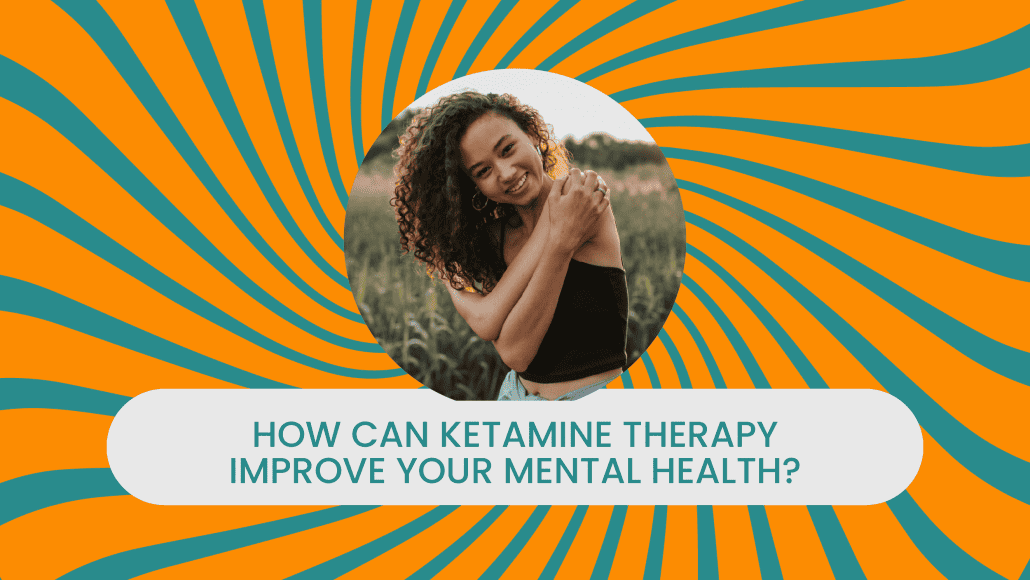
By: Paulina Aguilar
Ketamine treatment could be a temporary solution to serious mental conditions such as depression, anxiety or post-traumatic stress disorder. Read on for all the details.
Today the taboo around discussing mental health has been eradicated, and we now have more information about new and better treatments for different conditions. That’s why we took on the task of investigating ketamine treatment by interviewing an expert on the subject.

Jason A. Duprat MBA, MSA, APRN, CRNA, is a nurse anesthetist and former Navy officer turned entrepreneur who has a background in private practice, business technology, and healthcare marketing. He is the founder of the Academy of Healthcare Entrepreneurs, the Ketamine Academy, and the co-founder of the Academy of Intravenous Therapy.
What is ketamine?
Ketamine is a generic medication that has been FDA-approved as an anesthetic since the 1970s. It is in a special class of anesthetics because it works on a receptor that most other anesthetics do not, an NMDA receptor. It also produces psychological effects unlike those of other anesthetics. This effect is often referred to as dissociation. Many patients describe this as a sensation of feeling disconnected from one’s body, like they are floating. At higher doses than those typically seen for treating mental health conditions, ketamine can produce temporary visual changes including hallucinations. Ketamine is a Schedule III controlled substance that must be prescribed by a licensed healthcare professional.

What does ketamine treatment consist of?
Most outpatient clinics provide ketamine treatments via intravenous infusions or IM injections. The route of administration and the patient’s diagnosis influence the exact protocol followed in terms of dose, frequency, and total number of treatments needed.
Since most practices are using the generically available racemic ketamine, and they are providing their treatments in the form of infusions, I will specifically address those treatments. For mental health, ketamine infusions are given in an initial series of six infusions, typically over the course of two weeks. Dosing ranges typically start around 0.5 milligrams per kilogram per infusion. Many clinicians believe that patients may need dose titration and higher doses in order to benefit from the effects of ketamine. So, you typically see practices increasing the dose of each infusion on a case-by-case basis if they are not reporting an improvement in their symptoms. The infusion is followed by a short recovery period. These recovery periods last anywhere from 30 to 45 minutes in most practices. That is enough time for the ketamine to have its effects wear off. For the patient to walk steadily and safely when they leave the practice, they do have to have a driver take them home and someone to look after them for a few hours. They shouldn’t make any important decisions until the following day.

For what conditions is it recommended?
Since the year 2000, many studies have been published, showing that ketamine, when given in low-to-moderate doses can be beneficial for a variety of medical conditions. It can reduce symptoms of depression, anxiety, PTSD, and other mental health conditions. It can also provide relief from chronic pain, in some cases lasting weeks to months. Lastly, the literature also indicates that it can be helpful in treating substance abuse disorders.
What is its success rate?
This varies patient to patient, but additional literature indicates that about 70%, possibly as high as 75% of patients who are receiving ketamine for treatment-resistant depression obtain meaningful symptom relief. Studies define this as a reduction in their symptoms by at least 50%. When it comes to chronic pain, the success rate varies mainly due to the fact that pain has many different etiologies, and patients respond differently to ketamine based on the reason for their pain. In some chronic pain conditions, such as complex regional pain syndrome, some studies have reported pain reduction that can last weeks or even months.
How long should the treatment be maintained?
Ketamine treatments are not a cure for any condition. They do help alleviate symptoms, so the treatments need to be maintained periodically on an ongoing basis. The duration of effects varies from patient to patient, but in most cases, patients will return for an additional ketamine treatment every several weeks.
How expensive is it?
Ketamine therapy varies in cost depending on the reason it is being prescribed. It is not yet covered by most health care insurances, so often this is an out of patient out-of-pocket cost for patients. The cost of mental health infusions varies around the country, typically around $350 to $450 per infusion. For chronic pain the costs tend to be higher, simply because the dosing is higher and the duration of the infusions is longer. Most pain practices are administering ketamine infusion protocol where the infusion lasts several hours, which increases the cost of delivery. Those pain infusions typically run in the price range of $700 to $900 per infusion.
How should this treatment be performed correctly?
Patients should be properly screened. Ketamine therapy is reserved for patients who have tried more traditional medical treatments and in situations where those have been ineffective. Day in 2022. There are now ketamine therapy, training, and certification programs that weren’t available just 5 or 6 years go. So I would highly advise seeking out clinicians that have completed acomprehensive training program– ideally one that is nationally approved.

Are there any contraindications?
Contraindications vary, but high blood pressure, a rapid heart rate, hallucinations or schizophrenia for those with a history of such symptoms, bladder problems, poor liver function, problems with increased pressure in the brain and a variety of others might be contraindications that should be assessed by a licensed healthcare professional.
Where and how can people access this treatment?
People can access this treatment through a variety of outpatient clinics and even some hospitals around the country. There is at least one ketamine clinic in most major cities now. There areonline databasesthat only include clinics that have ketamine trained providers. It is advisable to search in your local area for ketamine providers that have completed a comprehensive training program that is nationally approved for the safe administration of ketamine therapy.
What factors should we consider before getting this treatment?
The first would be to ask yourself if you are potentially a good candidate. Do you have those diagnoses we previously discussed, such as treatment resistance, depression, anxiety, PTSD, chronic pain, or substance abuse disorder? Next, look into the provider who will be evaluating you, prescribing, and administering the treatment. Your provider could be a nurse practitioner, physician, or physician assistant, and they should have completed a comprehensive training program. Unlike in years past, there are now multiple ketamine therapy training programs available that are highly respected. You also want to ask the provider what level of experience they have, as well as which protocol they recommend and why.
Would you please add any success stories of people who have gone through this treatment?
As ketamine clinicians, we have provided hundreds of ketamine therapy infusions and have had multiple success stories. To respect patient privacy, I can’t go into the specifics. But I can tell you that on many occasions, we had patients and their families in tears, hugging our staff members and me because they were so grateful that ketamine therapy had improved their quality of life and reduced their worst symptoms far more than any other medical treatment had been able to do. One patient in specific even returned to producing music, which was something that he used to love in the past but hadn’t done in years because his depression symptoms had gotten so bad. There are countless real-world stories of how ketamine therapy has improved patients’ lives.
About the author: Paulina Aguilar
Graduate in Communication Sciences, pizza taster, cat whisperer, Muggle expert and specialist in series and movies.
© Copyright 2024 | Brilla Latina | All Rights Reserved